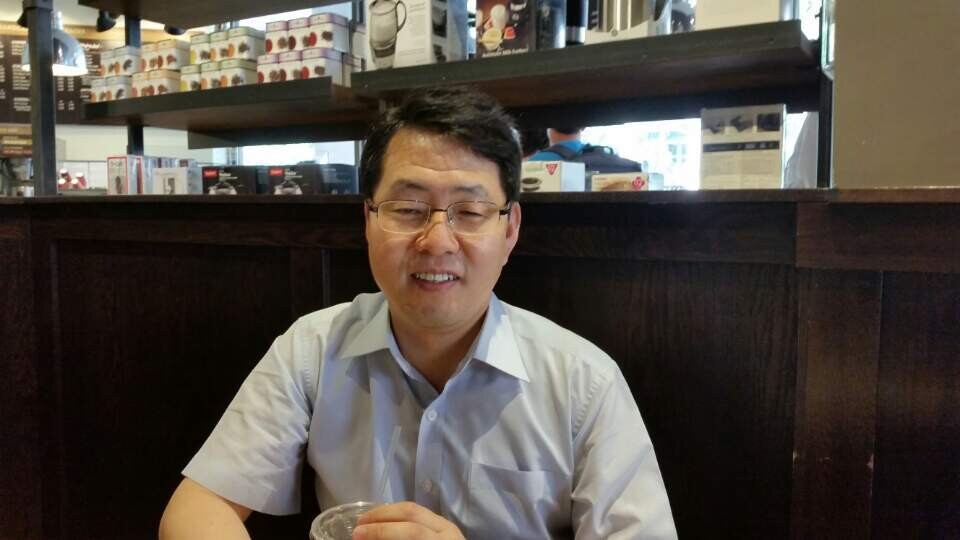hankyoreh
Links to other country sites 다른 나라 사이트 링크
Pyroprocessing “dream technology” could end up being a money hole

Pyroprocessing technology, the subject of a joint research project by South Korea and the US, is being touted in South Korea as a “dream technology” for reprocessing spent nuclear fuel from nuclear reactors. But it may end up costing nearly as much money as the Four Major Rivers Project while not having any benefits and only creating new problems, according to a leading nuclear physicist.
“Even by conservative estimates, the pyroprocessing facilities that are currently being planned by South Korea will cost between 18 and 22 trillion won (US$15.55 and $19 billion). It will turn into a black hole that is on a par with the Four Major Rivers Project,” predicted Kang Jung-min, a physicist who does research for the Natural Resources Defense Council (NRDC), an American nonprofit. Kang made the comments on July 5 during a meeting with Washington correspondents of South Korean media outlets.
Kang, who did his doctoral dissertation on pyroprocessing, is regarded as one of the undisputed authorities in the area.
Pyroprocessing is a technology for extracting the uranium and plutonium that are left over in spent nuclear fuel rods after they are burned in a light-water reactor. The idea is to recycle the fuel produced through this extraction process by burning it again in a fast reactor (known as a next-generation reactor).

This means that there will have to be reprocessing (pyroprocessing) facilities, nuclear fuel manufacturing facilities and a fast reactor. The government is currently planning to complete a pyroprocessing facility by 2025 that can process 100 tons of spent nuclear fuel and a sodium-cooled fast reactor by 2028.
Kang estimates that it will cost between 500 billion and 1 trillion won for a pyroprocessing facility on the scale the government is planning, between 500 billion and 1 trillion won for a nuclear fuel manufacturing plant, 3 trillion won for a fast reactor, between 12 trillion and 15 trillion won to operate the facilities for about 30 years and at least 2 trillion won to decommission them.
“This estimate is just based on the design cost,” Kang said. “Case studies in other countries show that more is spent when the facilities are actually being built and decommissioned.”
Kang also rebutted the government and the atomic energy establishment’s promotional claims that pyroprocessing and fast reactors can be used to reduce radioactive toxicity by 99.9% and shrink the area of high-level waste disposal facilities by 99%.
“In order to reduce the area of a spent nuclear fuel processing facility, you have to separate the cesium-137 and strontium-90, which are the chief causes of radioactive pollution. But in the processing of making yet another facility to store these materials, both the cost and the danger become much greater,” he said.
Cesium-137 is categorized as an extremely dangerous radionuclide - it accounted for two-thirds of the total radiation was leaked during the Chernobyl disaster in 1986.
“Doubts are also being expressed inside the South Korean atomic energy community about the arguments that are being raised in favor of pyroprocessing,” Kang said.
“In the US, research on pyroprocessing has basically been at a standstill since the 1990s. Over the past six decades, the US, the UK, France, Germany and Japan have invested more than 100 trillion won into fast breeders reactors, but they have failed to develop a commercially viable fast reactor,” Kang said.
As for why South Korea and the US nevertheless decided to carry out a 10-year joint research project on pyroprocessing from 2011 to 2020, Kang said he thinks it is because the interests of the two governments and the nuclear power industry happened to coincide.
By Yi Yong-in, Washington correspondent
Please direct questions or comments to [english@hani.co.kr]

Editorial・opinion
![[Column] Has Korea, too, crossed the Rubicon on China? [Column] Has Korea, too, crossed the Rubicon on China?](https://flexible.img.hani.co.kr/flexible/normal/500/300/imgdb/original/2024/0419/9317135153409185.jpg) [Column] Has Korea, too, crossed the Rubicon on China?
[Column] Has Korea, too, crossed the Rubicon on China?![[Correspondent’s column] In Japan’s alliance with US, echoes of its past alliances with UK [Correspondent’s column] In Japan’s alliance with US, echoes of its past alliances with UK](https://flexible.img.hani.co.kr/flexible/normal/500/300/imgdb/original/2024/0419/2317135166563519.jpg) [Correspondent’s column] In Japan’s alliance with US, echoes of its past alliances with UK
[Correspondent’s column] In Japan’s alliance with US, echoes of its past alliances with UK- [Editorial] Does Yoon think the Korean public is wrong?
- [Editorial] As it bolsters its alliance with US, Japan must be accountable for past
- [Guest essay] Amending the Constitution is Yoon’s key to leaving office in public’s good graces
- [Editorial] 10 years on, lessons of Sewol tragedy must never be forgotten
- [Column] A death blow to Korea’s prosecutor politics
- [Correspondent’s column] The US and the end of Japanese pacifism
- [Guest essay] How Korea turned its trainee doctors into monsters
- [Guest essay] As someone who helped forge Seoul-Moscow ties, their status today troubles me
Most viewed articles
- 1[Column] The clock is ticking for Korea’s first lady
- 2Samsung barricades office as unionized workers strike for better conditions
- 3After 2 months of delayed, denied medical care, Koreans worry worst may be yet to come
- 4[Correspondent’s column] In Japan’s alliance with US, echoes of its past alliances with UK
- 5[Column] Has Korea, too, crossed the Rubicon on China?
- 6Hong Se-hwa, voice for tolerance whose memoir of exile touched a chord, dies at 76
- 7[Photo] Smile ambassador, you’re on camera
- 8All eyes on Xiaomi after it pulls off EV that Apple couldn’t
- 9[Guest essay] How Korea turned its trainee doctors into monsters
- 10US overtakes China as Korea’s top export market, prompting trade sanction jitters